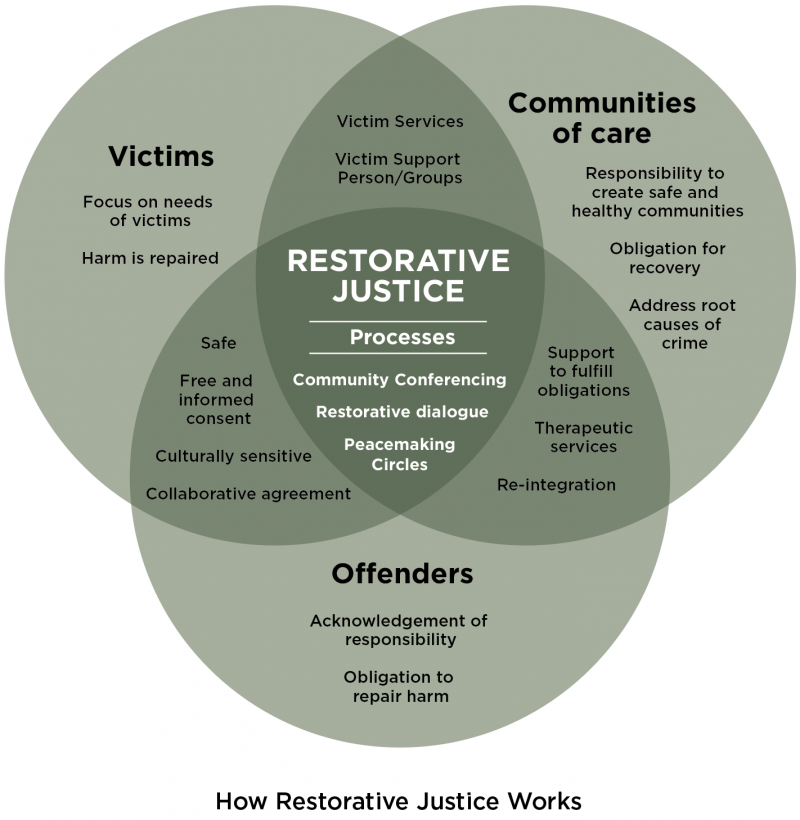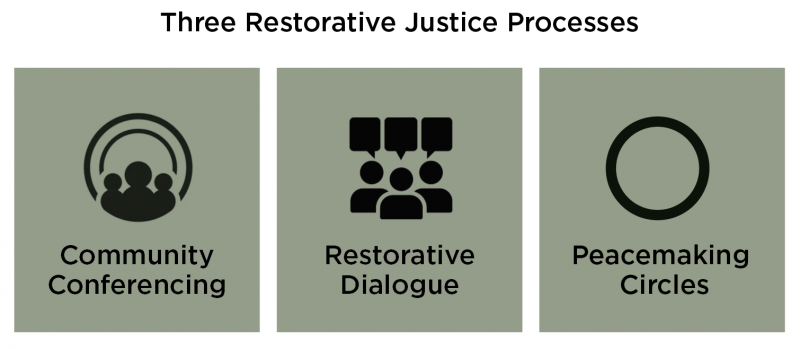What is restorative justice?
In the criminal law context, restorative justice is an approach to justice that involves the victim, the offender and other members of the community who may have been impacted by the crime. It may take on many different forms, and in some cases, may be focused only on the offender (known as transformative justice). A restorative justice approach seeks to repair the adverse effects of crime in a manner that addresses the root causes of crime. It seeks to address the needs of the victim ,the meaningful accountability of offenders and other members of the community who have been impacted by the offense, in order to create healthier and safer futures for all those affected.
Principle of restorative justice
The underlying principle of restorative justice is the understanding that crime causes harm to people and relationships and affects the community. Three beliefs flow from this:
- Those who have caused harm have a responsibility to repair that harm;
- Those who have been harmed are central in deciding what is needed to repair it; and
- Communities have a role to play in supporting victims and offenders and addressing the root causes of crime.

Practice of restorative justice
For the purpose of this pilot, restorative justice may be practiced through any process in which the victim and the offender together with the help of others, such as an elder, or a restorative justice facilitator, work to address how the harm that has occurred may be repaired. Some of the processes to be used in this pilot are: community conferencing, restorative dialogue, or peacemaking/ sentencing circles. Lawyers and justices do not generally participate in the restorative justice process, although in some rare cases, if invited by the service provider and they agree, they may be part of a sentencing circle.
While recognizing that the origins of restorative justice are grounded in Indigenous practice and law, its principles and framework for healing the harm that arises from a crime can be applied to non-Indigenous justice system participants. Both Indigenous-specific agencies and non-Indigenous agencies will participate in this project. However, agencies may choose to accept or refuse any individual referred to their program, depending on their criteria.
Any Indigenous person participating in a restorative justice process will have a say in the agency to be used and the specific cultural practices to be employed.

What is the legislative
authority of restorative justice?
The use of restorative justice in criminal matters is supported through both federal and provincial legislation. For adults, section 717 of the Criminal Code authorizes the diversion of matters from the formal criminal justice system by the use of alternative measures. Restorative justice falls under this category. For alternative measures to be used, the offender needs to accept responsibility for the offence and the referrals must not interfere with the protection of society.
Where an accused pleads guilty, or is found guilty of an offence, section 718 articulates several relevant objectives of sentencing, including:
(e) that sentencing should provide reparations for harm done to victims or the community, and
(f) that a sentence should promote a sense of responsibility in offenders, and acknowledgment of the harm done to victims or to the community.
Restorative justice is also referenced in section 8 of the Alberta Police Act and the federal Victims Bill of Rights.

